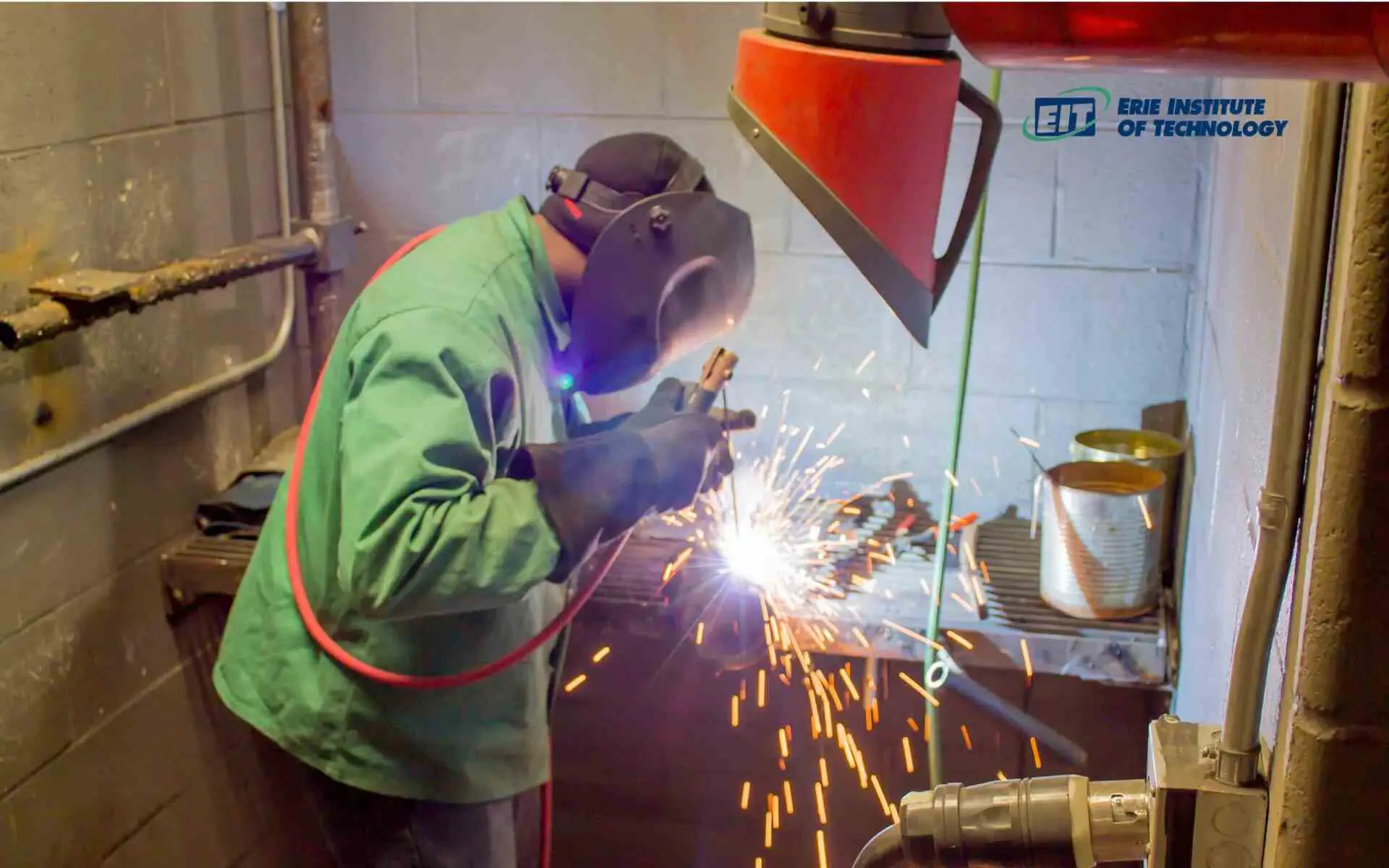Welding is the process of fusing two or more parts using heat, pressure, or both. It’s often done on metal, thermoplastics, and even wood. The resulting joint is known as a weldment, and the conjoined parts are known as the parent material. The material used to create the weldment is called a filler or consumable. Some people would say that welding is an art form since some materials call for specific processes or techniques.
Thinking about starting a career in welding? It helps to know some key industry terms, applications, and more. Start with understanding the types of welds you’ll be asked to create and build your knowledge from there.
Types of Welds
Slot Weld
A slot weld is a joint between two overlapping parts. It’s created by depositing a filet weld around the edge of a hole in one part that’s joined to the second part through the exposed surface of the hole.
Plug Weld
To create a plug weld, you’ll use a filler metal to join one part to the surface of another overlapping part through the hole.
Full Penetration Weld
Also known as complete joint penetration (CJP), full penetration welds occur when the weld metal fully penetrates the joint with complete root fusion.
Partial Penetration Weld
A partial penetration weld occurs when the weld metal is intentionally not fully penetrating. You may also hear this type of weld referred to as partial joint penetration (PJP).
Start Your Career in Skilled-Trade Industry
Open the door to a rewarding career!
Welding Process
1. Gas Metal Arc Welding (GMAW/MIG)
Gas metal arc welding, sometimes called MIG welding, uses a thin wire as an electrode and is typically used in construction and automotive applications. You’ll typically use this process on metals like copper, stainless steel, nickel, and more.
During MIG welding, the wire heats up as it’s fed through the welding instrument. To keep air containment out of the weld, you must use a shielding gas like carbon dioxide, oxygen, argon, or helium.
2. Gas Tungsten Arc Welding (GTAW/TIG)
Also known as TIG welding, this process is typically used for welding thin and non-ferrous metals like aluminum, copper, lead, or nickel. TIG welding is different from other processes because it uses a non-consumable tungsten electrode to form a weld.
Common applications for this welding process include bicycle or aircraft manufacturing.
3. Shielded Metal Arc Welding (SMAW)
Often called stick welding, shielded metal arc welding is a common process used among home-shop welders. This process involves manual techniques using a flux-coated electrode consumable.
Stick welding is not known for its high quality or durability, however, it’s one of the most low-cost processes.
4. Flux Cored Arc Welding (FCAW)
Flux-cored arc welding involves continuously feeding a wire as your weld, much like MIG welding. However, flux-cored arc welding is broken into two distinct processes.
One uses a shielding gas. The other uses self-shielding agents produced when fluxing agents decompose within the wire. This process makes it possible to weld in outdoor conditions.
FCAW is commonly applied in construction projects because the semi-automatic arc provides high welding speeds and portability.
Other welding processes you may come across include:
- Submerged Arc Welding (SAW)
- Gas Welding/Oxyacetylene Welding
- Thermit Welding
- Forge Welding
- Electron Beam Welding
- Atomic Hydrogen Welding
- Plasma Arc Welding
- Resistance Welding

There’s a Big Shortage of Skilled Welders Right Now
According to the American Welding Society (AWS), there will be a massive welder shortage by 2024. Estimates show the industry will face a staggering 400,000 worker shortage. This is likely due to a large portion of the industry retiring.
This creates more opportunities for people looking to start a new career or switch careers to welding. All you need to do is get the right training and education to gain the experience you need to become a skilled welder.
Become a Qualified Welder
Starting a new career or switching careers can seem like an uphill battle. But when you attend a skilled trade training program dedicated to your success, you’ll realize how attainable your goals really are.
At EIT, our welding program provides you with the practical experience and hands-on training employers seek. Check out what our one-year welding program can offer you.

Ross Aresco
CFO
Ross Aresco is the CFO of Erie Institute of Technology. Erie Institute of Technology (EIT) is an Erie Pennsylvania technical/trade school providing training programs for medical, computer, electronics, manufacturing, and technology careers. EIT offers programs in many different areas to suit your interests and talents.
